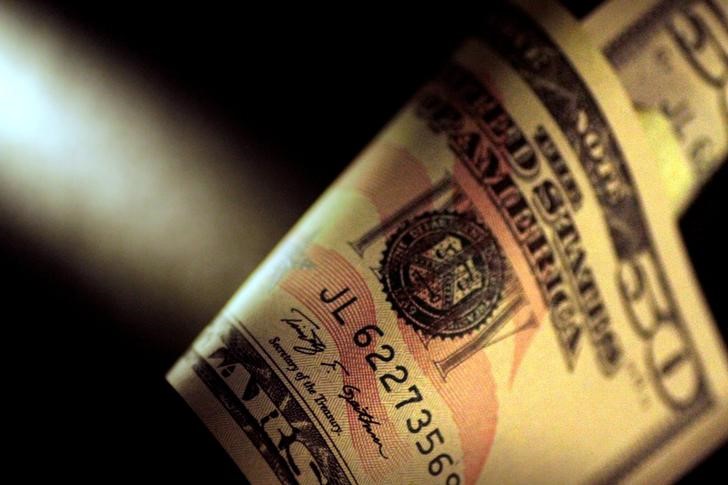Investing.com -- Most Asian currencies rose on Wednesday, while the dollar extended recent losses as markets awaited more signals on where U.S. interest rates will peak, while focus also turned to upcoming inflation data.
Comments from Federal Reserve officials this week suggested that the central bank was close to reaching peak interest rates in its current rate hike cycle. This sparked sharp capital flows from the dollar and into more risk-driven assets, amid bets that the greenback had run its course.
The dollar extended overnight losses into the Asian session, with the dollar index and dollar index futures sinking 0.3% each to a two-month low.
Weakness in the dollar, coupled with easing fears of the Fed, sparked strong gains in most Asian currencies, also helping them recover from recent losses against the greenback.
The Japanese yen surged 0.6% to a near one-month high against the dollar, brushing off a string of weak economic readings, while the Australian dollar jumped 0.5%. The two were the best performers in the region for the day.
The rate-sensitive South Korean won added 0.1%, with focus also turning to an upcoming Bank of Korea meeting this week, while the Indian rupee rose 0.2% ahead of local consumer price index (CPI) inflation data due later in the day.
Chinese yuan rises amid stimulus talk
The Chinese yuan added 0.3% on Wednesday, hitting a three-week high to the dollar after a series of strong daily midpoint fixes by the People’s Bank of China.
The yuan was also aided by improving prospects for the Chinese economy, after state media sources reported that Beijing was considering more stimulus measures to shore up a slowing post-COVID economic recovery.
While the Chinese economy is likely to benefit from more spending measures, the yuan may face new headwinds from increased liquidity and inflation in the country, as well as more potential interest rate cuts by the PBOC.
The Chinese currency had slumped to six-month lows against the dollar in June.
U.S. CPI, Fed cues in focus
Markets were broadly fixated on upcoming U.S. CPI data, which is expected to show that overall inflation eased in June. But core CPI is expected to have remained sticky, which could in turn attract some more rate hikes by the Fed in the near-term.
While Fed officials said that peak U.S. interest rates were close, they also unanimously agreed that more rate hikes were needed in the near-term to quell sticky inflation.
The Fed is widely expected to raise rates by 25 basis points in a late-July meeting.
